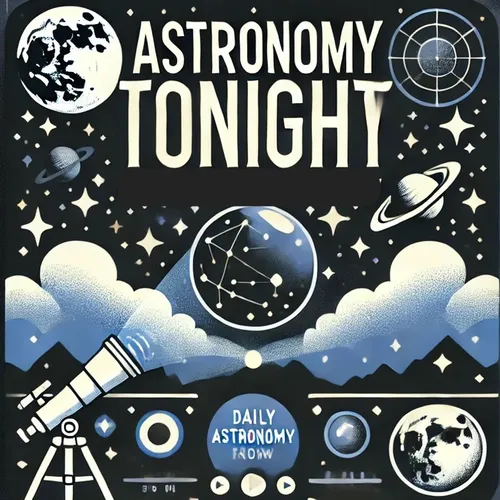Astronomy Tonight for - 11-05-2024
- Author
- Inception Point Ai
- Published
- Tue 05 Nov 2024
- Episode Link
- https://www.spreaker.com/episode/astronomy-tonight-for-11-05-2024--62621149
Ah, November 5th! A date that twinkles with astronomical significance. Let me take you back to the year 2018, when a truly extraordinary event occurred in the realm of space exploration.
On November 5, 2018, NASA's Voyager 2 spacecraft officially entered interstellar space, becoming only the second human-made object to do so after its sibling, Voyager 1. This momentous occasion marked the probe's exit from the heliosphere, the protective bubble of particles and magnetic fields created by our Sun.
Imagine, if you will, a plucky little spacecraft, launched way back in 1977, finally breaking free from the Sun's influence after a journey of over 41 years and approximately 11 billion miles (18 billion kilometers)! It's like a rebellious teenager finally moving out of their parents' house, but on a cosmic scale.
Voyager 2's entry into interstellar space was confirmed when its Plasma Science Experiment (PLS) instrument noticed a steep decline in the temperature and density of solar wind particles. Essentially, it was like the probe suddenly found itself in a cosmic ghost town, with the familiar solar wind particles vanishing into the void.
This achievement was particularly exciting because Voyager 2 carries a working PLS, unlike Voyager 1, whose PLS had stopped functioning decades earlier. This meant that Voyager 2 could provide direct measurements of the properties of the interstellar medium, giving scientists unprecedented insights into the space between stars.
The Voyager 2 probe continues its journey into the unknown, carrying with it a Golden Record containing sounds and images portraying the diversity of life and culture on Earth. It's like sending a cosmic postcard to potential alien civilizations, saying, "Greetings from Earth! We come in peace... and we have excellent taste in music!"
So, on this day in 2018, humanity took another giant leap into the cosmos, proving once again that our curiosity and ingenuity know no bounds – not even the boundaries of our own solar system!
This content was created in partnership and with the help of Artificial Intelligence AI
